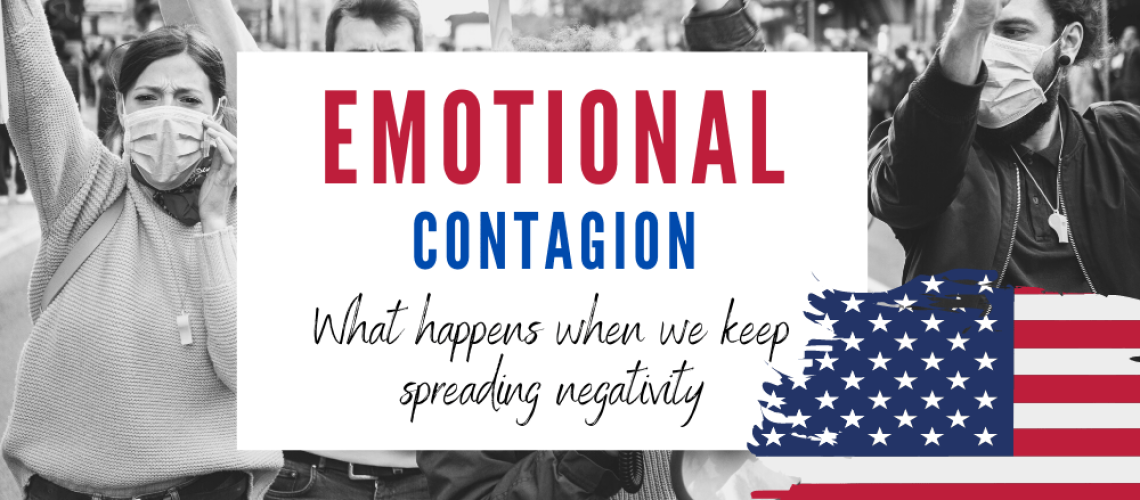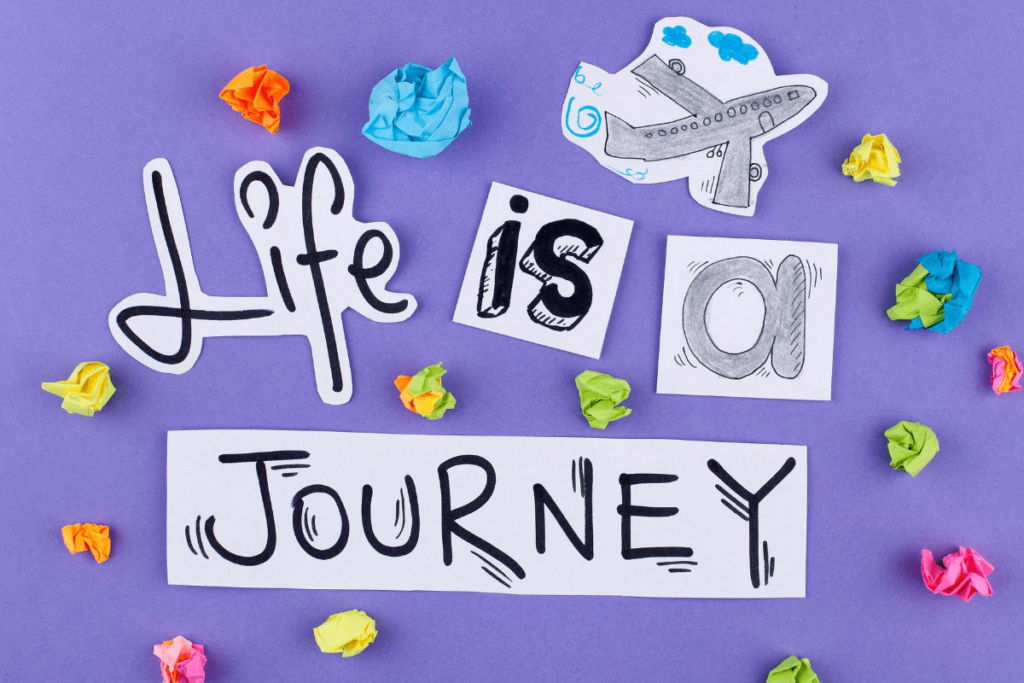Emotional contagion can affect us all.
Last Wednesday’s events shook our nation in many ways. As I scrolled through my social feeds that night…I was pummeled with one negative message after another.
The event itself had me questioning the safety of our country. Ideas of respect…respect of another, of property, of history, rang in my ears. All of a sudden I was filled with content from my friends and family…some angry, upset, and others scared.
At that moment, the feelings of my friends also filled me. My breath quickened, my hands clenched in tight fists. Feelings of sadness and anger filled me.
And I promptly placed my phone, screen down on the table in front of me.
I took a deep breath to cleanse myself of all this negativity.
I thought about the idea of emotional contagion and how if I’m experiencing this, others probably are too.
They don’t really have a choice when their entire newsfeed is filled with this flurry of negativity, rage, and division.

Emotional Contagion
Emotional Contagion first came to light in the early 1990s by psychologists. It is when others’ emotions trigger similar emotions in other people consciously or unconsciously. In other words, those emotions someone else is experiencing, you can experience too even if you are not in their situation.
Think of yawning…the person next to you yawns and then you yawn too. It’s not that you wanted or didn’t want to yawn, it just happened. It’s the same with emotional contagion. You may not want to feel negative, it just happens because you are around it.
In 2012, a study was completed using 689,000 Facebook accounts to explore emotional contagion in filtering negative and positive words and phrases. What was found was that there was evidence of emotional contagion through social networks on a “massive scale.” This makes sense as one post can be shared or discussed and move on within networks, spreading those messages whether positive or negative.
Now, get this…another study in 2014 found out there was only a .07% (read that again) decrease in negative words on one’s status update when the number of negative posts on their feed decreased. That means you would need THOUSANDS of positive words in your feed before you, yourself would write a positive status…yikes!
Now of course this is based on words and not people’s actual feelings. However, you will never know the actual feelings of people when all you have is their words, so they can affect you nonetheless.
How it Affects Us
Think about a time when someone shared happy news with you…did you frown or smile? I’m going to bet you smiled because they smiled. You were mimicking the emotion they were expressing. The same goes for bad news.
If you smile at someone giving you bad news, they will probably think there is something wrong with you, lol.
Part of being human is the ability to relate to others through empathy. When we mimic someone else, it shows we are validating their emotional experience.
Sure there are ups and downs in all relationships. But when we find ourselves consistently surrounded by negative emotions and we mimick those…it sends messages to our brain to hold onto that feeling. This leaves us feeling down, depressed, unmotivated, etc.
I want to stress that this isn’t limited to social media. This applies to your home, your workplace, your Zoom meetings…emotional contagion is everywhere.
Creating Boundaries
By surrounding ourselves with positive messages and putting them out there ourselves, we have the power to change:
- the feeling of the content we consume
- our emotional state
- the emotional state of others
If you’re in a meeting that is going south on the negative train, maybe that’s a good time to break for the bathroom or go get a snack (or log off a few minutes and pretend your internet crapped out, I won’t tell!). Create the boundaries you need to protect yourself, particularly if you find yourself more susceptible to experiencing others’ emotions.
You may need to unfriend, unfollow, or block certain people, groups, or messages if they are overwhelmingly negative and affecting you.
Boundaries are good…see how you feel after you remove negativity and if you feel better, keep ’em going.
Remember, the only feelings you are responsible for are your own. This goes for the self-talk in your head too!
Happy thoughts! Think happy thoughts! Let those be contagious and repeat them often.
Positivity
Positive messages are everywhere if you know where to look. Find them in this blog. Search for them online when you create your boundaries with the negative ones. Be mindful of what you surround yourself with.
Look around you, what is positive in your life right now?
What are the positive aspects of you as a person?
What are the memories that help you laugh or smile?
Hold on to those, keep putting them out in the world.



